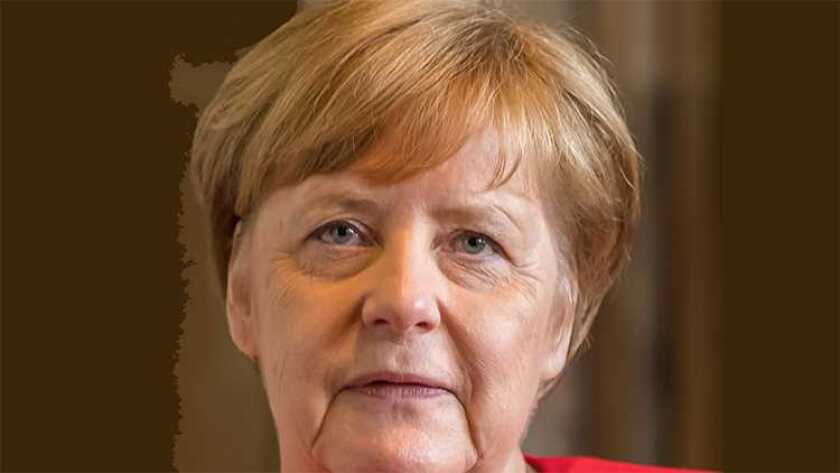No apologies for returning to the subject of quantum telecoms and quantum computing so quickly, but so much has happened since the April/May issue that it’s worth a second look.
In the last issue I wrote about Dan Caruso, the founder of Zayo, who’s now investing his future in quantum technology at a company called ColdQuanta, and about why quantum technology is becoming so exciting now, 100 years after the physicists at Göttingen university in Germany put the initial ideas together.
Let’s stay in Germany, with a physicist who is as famous as Albert Einstein, Erwin Schrödinger and Werner Heisenberg, but for different reasons: Angela Merkel (pictured), the chancellor of Germany, who studied physics at university in Dresden and went on to do a PhD in quantum chemistry.
In June 2020 Merkel officiated at the inauguration of IBM’s first quantum computer at a European research institution, the Fraunhofer Institute just outside Stuttgart. This is a vital part of Germany’s €2 billion plan to develop a quantum ecosystem.
The move is just the latest in a number of advances in quantum technology that are expected to change the face of cloud computing and telecommunications. Toshiba has just announced that its laboratory in Cambridge has pushed the distance for secure communications to 600km, a significant advance towards building a global quantum internet. Previous commercial quantum key distribution (QKD) systems were limited to 100-200km of fibre.
Who else is spending money? The Netherlands: it is building a national headquarters for its quantum research, supported by the government, universities and industry. The House of Quantum — brilliant name — will be in Delft, on a 12,000 sq m site on the campus of the University of Technology (TU Delft). The idea is to build an ecosystem of companies, investors and researchers to create quantum technologies and businesses. Target completion date is 2024.
That follows a decision by the Netherlands in April to spend €615 million from its national growth fund on stimulating the development of quantum technology.
The European Union has its own project, EuroQCI, for quantum communication infrastructure, involving Airbus as the lead plus Leonardo, the Italian company that used to be called Finmeccanica. (Leonardo is a silly name: Google it and you’ll understand why.)
Joining the artist from Vinci, or the actor from Los Angeles, is Orange, PwC and others, and they want integrate quantum technologies and systems into terrestrial fibre networks. There’s a space element, with the aim of ensuring full coverage across the EU and other continents. Possibly even the UK, though that is no longer part of the EU.
Instead, the UK also has a National Quantum Technology Programme, backed by UK Research and Innovation (UKRI). The budget is £930 million over two phases. That’s almost €1.1 billion, to allow comparisons with the German €2 billion and the Dutch €615 million. As in Germany, IBM is involved in this, contributing £38 million to a project at the Daresbury lab in north-west England.
Still in the UK, but independent of the UKRI project is Cambridge Quantum Computing (CQC), based in the English university city and employing more than 35 PhDs among its 60 scientists. CQC has just tied up with Honeywell’s own quantum computing operation, Honeywell Quantum Solutions (HQS).
Honeywell, you ask? Isn’t that the company that used to do central heating thermostats? Well, yes, and it used to be one of IBM’s big US-based rivals in the IT industry, the H in Bunch, standing for Burroughs, [Sperry] Univac, later Unisys, NCR, Control Data and Honeywell. They all imploded in the 1980s and 1990s, and IBM nearly did too, but there is still a Honeywell, and it has been playing with quantums — or is that quanta?
Honeywell’s unit, in Colorado, will merge with CQC, and CQC’s CEO will be in charge of the lot. HQS shareholders will own 54% of the new entity with CQC shareholders owning 46%. Honeywell will also invest $270-$300 million in the venture, which is still unnamed. Expect at least one Q in the name when it is announced. They’re going for a market they expect to be worth $1 trillion “over the next three decades”. Make a note in your 2051 Outlook calendar to check that number.
EuroQCI, above, talked of extending quantum communications into space, but doing that possibly even faster is CommStar, a US satellite company. Its extraordinarily ambitious role is to build networks for Nasa for its mission to land people on the Moon again, for the first time for half a century. And while Apollo 11 and its counterparts ran their comms on a 1960s transistor radio, with the computing power of an abacus, we don’t do that any more. The Nasa mission will need proper cloud computing, and proper broadband, all the way to the Moon, and in the area that Nasa is calling “cislunar” — that is, this side of the Moon.
The CommStar-1 satellite will be doing that, at some point over the next two years, and the company is building in quantum encryption from the start, recognising that if the technology works for Nasa, it will also work for commercial customers — not just over satellite, but over 4G and 5G mobile as well as over fibre and, if you insist, copper. CommStar has already lined up partners: it has identified Lumen, Orange and Equinix, with the encryption technology coming from Quantum Xchange.
It’s moving fast, this quantum technology. I might come back to it in the next issue. There are a lot of quanta around.






